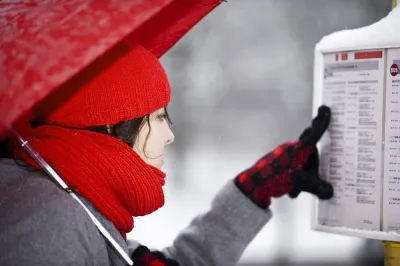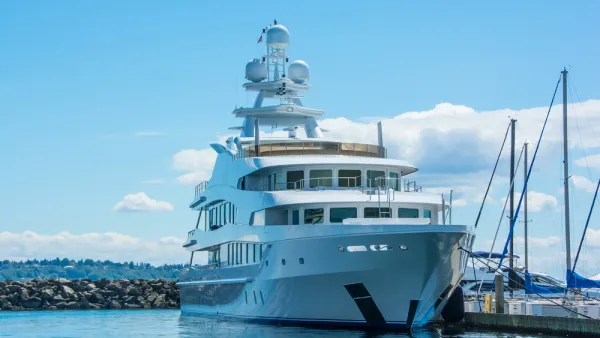Yonah Freemark gives less-than-stellar marks for the transit investments of U.S. cities in the 2010s.

"Cities across the U.S. added more than 1,200 miles of expanded transit service between 2010 and 2019," according to an article by Yonah Freemark. But that proclamation comes with an important caveat: "But all that construction isn’t keeping up with the need."
According to Freemark's survey, documented at the Transit Explorer website, U.S. cities collectively spent about $47 billion to add those 1,200 miles, adding plenty of transit considered by Freemark to be "something more than run-of-the-mill bus routes." The article includes a lot more detail on what Freemark means by transit service improvements—once broken down, however, the data shows that cities added about half of those new transit lines in the form of bus lines, and the other half in rail lines.
Freemark provides more detail about the rail service added in the past decade:
Of those rail projects, just 26 miles were in the form of metro investments—heavy-rail lines like new subways or elevated trains that often carry the most passengers through the densest parts of the country. And just 37 miles were in the form of streetcars, perhaps a surprising fact given the frequent discussion of that transportation mode’s deficiencies.
In terms of the new bus lines added in the past decade, Freemark concludes an unequivocally negative assessment: "American cities have underinvested in expanded quality bus lines."
Freemark took to Twitter to share the findings detailed in this article and to provide additional perspective on the country's transit investments:
From 2010–2019
BRT/ART
- US added 2 miles/million ppl
- France added 10.5 miles
Metros & light rail
- US added <1 miles/million ppl
- France added 3.5 miles
One country added transit riders, the other lost them. Guess which.https://t.co/If8jpZNVu3 pic.twitter.com/T7RYrqDOTU— Yonah Freemark (@yfreemark) January 7, 2020
FULL STORY: Too little, too late? A decade of transit investment in the U.S.

National Parks Layoffs Will Cause Communities to Lose Billions
Thousands of essential park workers were laid off this week, just before the busy spring break season.

Retro-silient?: America’s First “Eco-burb,” The Woodlands Turns 50
A master-planned community north of Houston offers lessons on green infrastructure and resilient design, but falls short of its founder’s lofty affordability and walkability goals.

Delivering for America Plan Will Downgrade Mail Service in at Least 49.5 Percent of Zip Codes
Republican and Democrat lawmakers criticize the plan for its disproportionate negative impact on rural communities.

Test News Post 1
This is a summary

Test News Headline 46
Test for the image on the front page.

Balancing Bombs and Butterflies: How the National Guard Protects a Rare Species
The National Guard at Fort Indiantown Gap uses GIS technology and land management strategies to balance military training with conservation efforts, ensuring the survival of the rare eastern regal fritillary butterfly.
Urban Design for Planners 1: Software Tools
This six-course series explores essential urban design concepts using open source software and equips planners with the tools they need to participate fully in the urban design process.
Planning for Universal Design
Learn the tools for implementing Universal Design in planning regulations.
EMC Planning Group, Inc.
Planetizen
Planetizen
Mpact (formerly Rail~Volution)
Great Falls Development Authority, Inc.
HUDs Office of Policy Development and Research
NYU Wagner Graduate School of Public Service





























